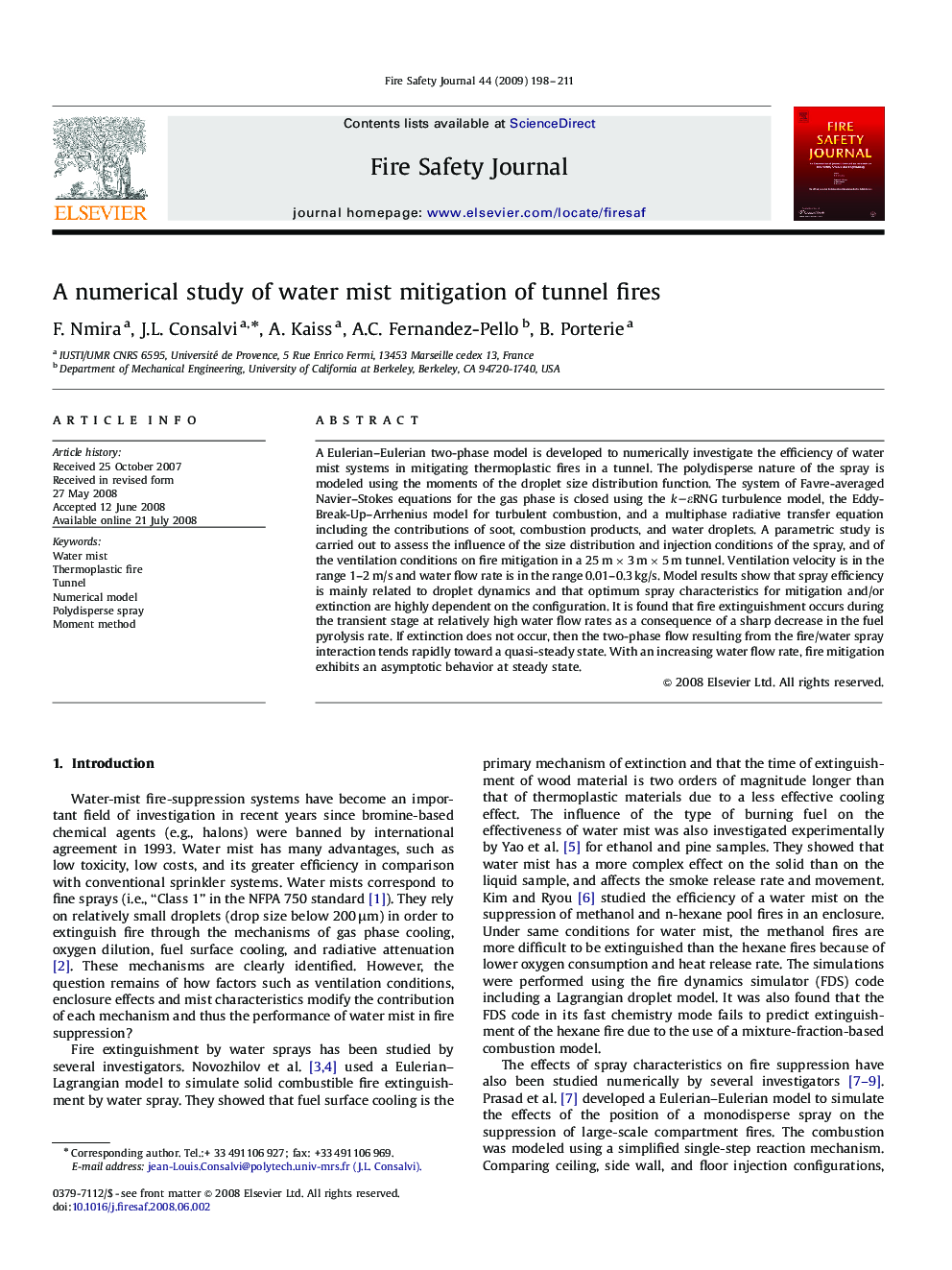| Article ID | Journal | Published Year | Pages | File Type |
|---|---|---|---|---|
| 270466 | Fire Safety Journal | 2009 | 14 Pages |
A Eulerian–Eulerian two-phase model is developed to numerically investigate the efficiency of water mist systems in mitigating thermoplastic fires in a tunnel. The polydisperse nature of the spray is modeled using the moments of the droplet size distribution function. The system of Favre-averaged Navier–Stokes equations for the gas phase is closed using the k–εRNGk–εRNG turbulence model, the Eddy-Break-Up–Arrhenius model for turbulent combustion, and a multiphase radiative transfer equation including the contributions of soot, combustion products, and water droplets. A parametric study is carried out to assess the influence of the size distribution and injection conditions of the spray, and of the ventilation conditions on fire mitigation in a 25m×3m×5m tunnel. Ventilation velocity is in the range 1–2 m/s and water flow rate is in the range 0.01–0.3 kg/s. Model results show that spray efficiency is mainly related to droplet dynamics and that optimum spray characteristics for mitigation and/or extinction are highly dependent on the configuration. It is found that fire extinguishment occurs during the transient stage at relatively high water flow rates as a consequence of a sharp decrease in the fuel pyrolysis rate. If extinction does not occur, then the two-phase flow resulting from the fire/water spray interaction tends rapidly toward a quasi-steady state. With an increasing water flow rate, fire mitigation exhibits an asymptotic behavior at steady state.
